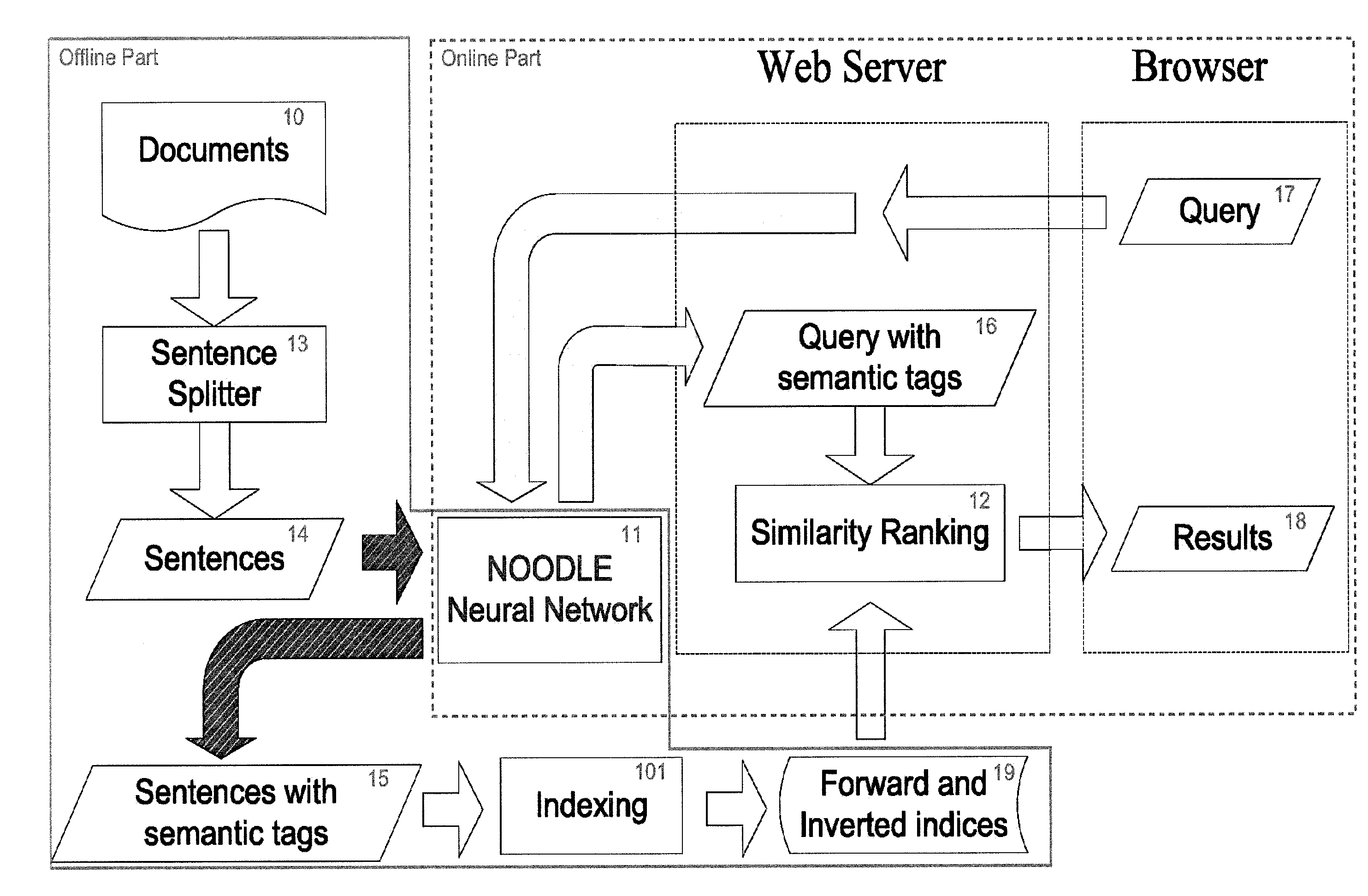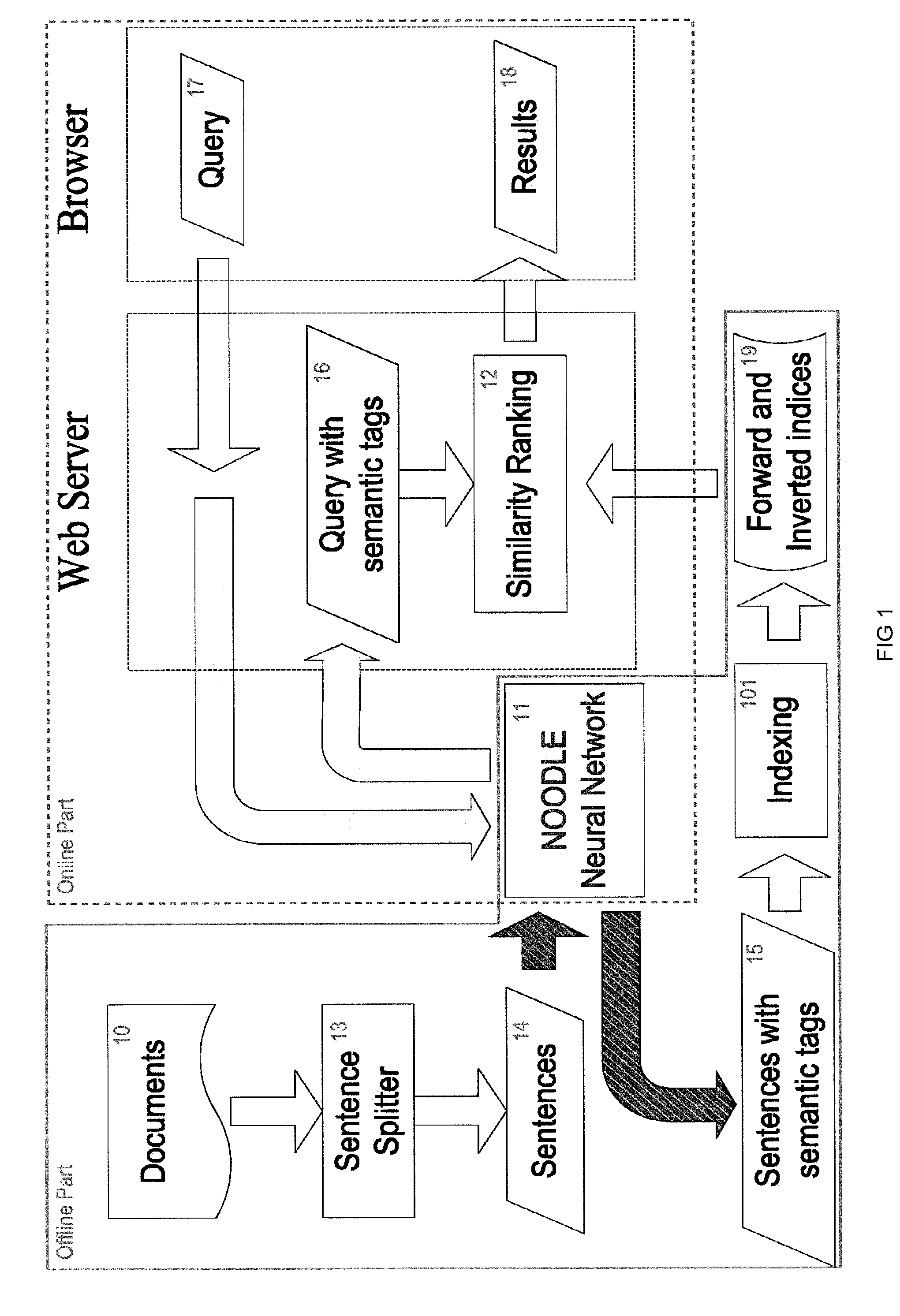Semantic Search Via Role Labeling
a role labeling and semantic search technology, applied in the field of query answering systems, can solve the problems of large-scale open-domain qa that is still very difficult, and the performance of such systems is limited to their qa databas
- Summary
- Abstract
- Description
- Claims
- Application Information
AI Technical Summary
Benefits of technology
Problems solved by technology
Method used
Image
Examples
Embodiment Construction
[0011]Disclosed herein is a semantic searching method for use in a query answering (QA) system. The semantic searching method efficiently indexes and retrieves sentences based on a semantic role matching technique that uses a neural network architecture similar to SENNA. First, semantic roles (metadata) are computed offline on a large database of documents (e.g., general web data used by search engines or special collections, such as Wikipedia) and the metadata is stored along with word information necessary for indexing. At query time, semantic roles are predicted for the query online and a matching score against all the documents in the database, is computed that incorporates this semantic information.
[0012]The offline processing and online labeling are performed using fast prediction methods. Therefore, given the indices computed offline, the retrieval time of the present system is not much longer than other simple IR models such as a vector space model, while the indexing itself...
PUM
 Login to View More
Login to View More Abstract
Description
Claims
Application Information
 Login to View More
Login to View More - R&D
- Intellectual Property
- Life Sciences
- Materials
- Tech Scout
- Unparalleled Data Quality
- Higher Quality Content
- 60% Fewer Hallucinations
Browse by: Latest US Patents, China's latest patents, Technical Efficacy Thesaurus, Application Domain, Technology Topic, Popular Technical Reports.
© 2025 PatSnap. All rights reserved.Legal|Privacy policy|Modern Slavery Act Transparency Statement|Sitemap|About US| Contact US: help@patsnap.com



